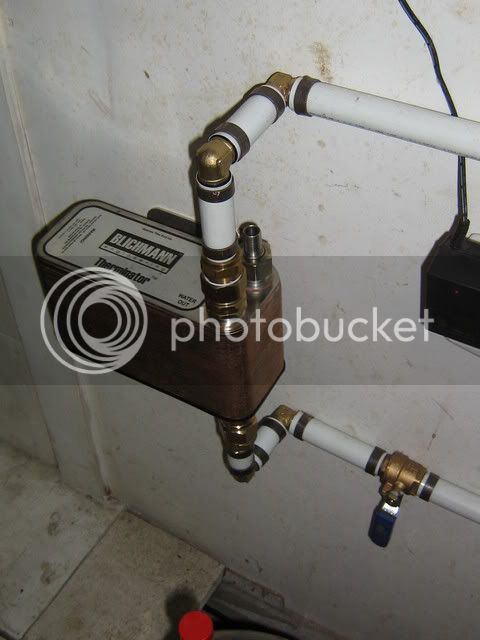So much information!! I am on verge of deciding which way to go. I am trying to figure out all of the pros and cons of each system. When I go AG(soon) I will be doing both 5 and 10 gallon brews(in a keggle) but probably more often doing 5 gallon. Any other additions to this? Any of my pros/cons wrong? If so please let me know and explain soI will have a better understanding. I don't really want want to get a pump(the spending never ends ) but think that if i go with a plate or CFC then it is important. It seems that a gravity fed CFC takes the same time to chill as an IC...yes???? Thanks for your thoughts.
) but think that if i go with a plate or CFC then it is important. It seems that a gravity fed CFC takes the same time to chill as an IC...yes???? Thanks for your thoughts.
IC:
1) easiest to use
2) cheapest (but only by a little)
3) easiest to build
4) Slowest to cool
5) waste more water
6) no pump necessary
CFC:
1) faster to chill wort
2) harder to clean
3) need a pump to get fastest cooling
4)more expensive
5) a little harder to build
6)waste less water
Plate
1) easy to use
2) hardest to clean
3) uses least water
4) most expensive
5) can't be DIY(or can it??)
6) pump essential
IC:
1) easiest to use
2) cheapest (but only by a little)
3) easiest to build
4) Slowest to cool
5) waste more water
6) no pump necessary
CFC:
1) faster to chill wort
2) harder to clean
3) need a pump to get fastest cooling
4)more expensive
5) a little harder to build
6)waste less water
Plate
1) easy to use
2) hardest to clean
3) uses least water
4) most expensive
5) can't be DIY(or can it??)
6) pump essential






